The Wars of the Roses: The Key Players in the Struggle for Supremacy
£9.30£10.40 (-11%)
In the second half of the fifteenth century, for over thirty years, civil war tore England apart. However, its roots were deeper and its thorns were felt for longer than this time frame suggests. The Wars of the Roses were not a coherent period of continual warfare. There were distinct episodes of conflict, interspersed with long periods of peace. But the struggles never really ceased. Motives changed, fortunes waxed and waned, the nature of kingship was weighed and measured and the mettle of some of England’s greatest families was put to the test. Matthew Lewis examines the people behind these events, exploring the personalities of the main players, their motives, successes and failures. He uncovers some of the lesser-known tales and personal stories often lost in the broad sweep of the Wars of the Roses, in a period of famously complex loyalties and shifting fortunes.
Read more
Additional information
| Publisher | Amberley Publishing, Reprint edition (15 Aug. 2016) |
|---|---|
| Language | English |
| Paperback | 288 pages |
| ISBN-10 | 1445660237 |
| ISBN-13 | 978-1445660233 |
| Dimensions | 12.4 x 2.03 x 19.81 cm |

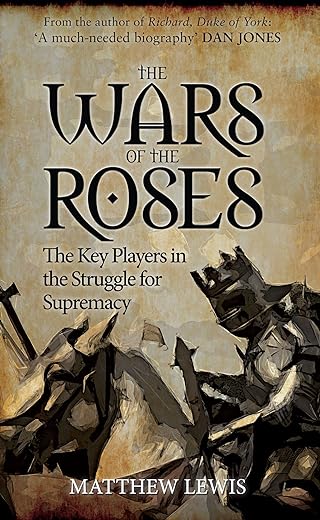

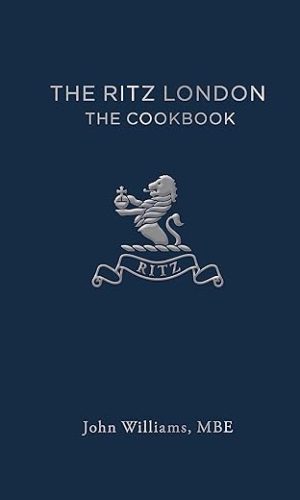
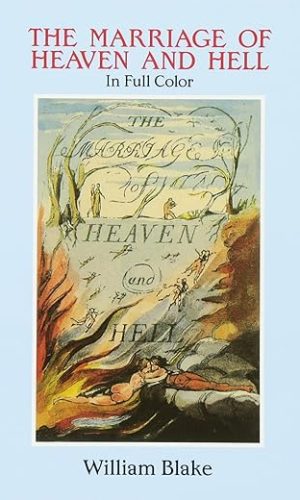
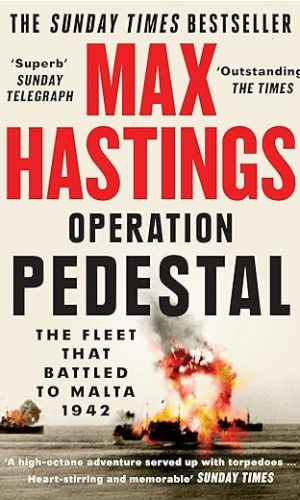
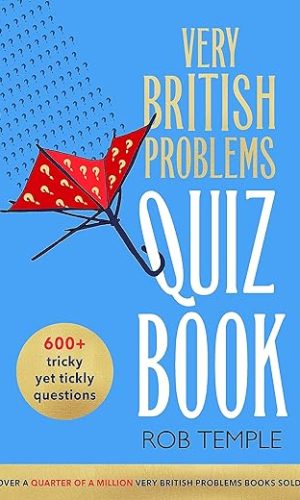
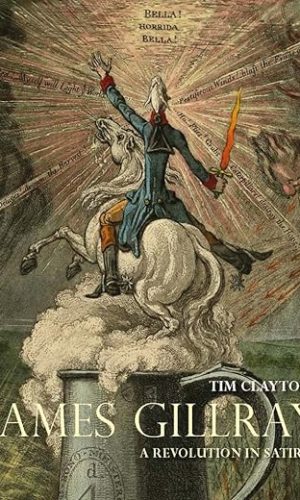

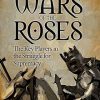
by Mark Foster
After two chapters I gave up, disappointed with both the quality of the writing and the content. It reads like a draft waiting for an editor’s hand to tame the unwieldy sentences, knock the descriptive passages into shape and bring some focus to the analysis. If you’re interested in this period you can’t do better than the Hollow Crown, the standard this book seeks to emulate but sadly falls short of.
by Bookworm
I love this book.
First let me say that from the blurb & cover title I expected something more like an A – Z ‘who’s-who’ of the Wars of the Roses – and that, this book is not. At first I was a little disappointed, as an A – Z would be quite useful to me, especially as so many of the participants can be known under different titles, eg their actual names, or their noble titles; moreover, noble titles can also change ownership, so the Duke of Somerset at different times might be different people. The nearest thing I have come across to such an A-Z biography so far, oddly enough, is in the form of a board game “A Crown of Paper / Coat of Steel” which gives wargaming rules for playing a Wars of the Roses campaign with downloadable and printable files. It contains a series of ‘nobles cards’, each with a short bio of the relevant personality on one side and a gaming profile for the other side. See http://perfectcaptain.50megs.com/acop.html for more.
Instead this book is essentially a straightforward book on the history of the Wars of the Roses, focusing on the main players – Somerset, Henry VI, Edward and so on. But it’s immensely readable – some histories of Medieval subjects can be very dry and academic, not this book. It has a surprisingly racy style that keeps you engaged like a good novel (even though it is not a novel) and even when you already know how it all ends (having read up on the Wars from other sources already). In some ways the slightly subjective touches the author adds in imagining Warwick thundering to Edward etc., are more like what a medieval chronicler would add to the text, and give the book a sense of immediacy.
Chapter length is also very well chosen. Each chapter is just long enough to tell its part of the story, and no more. I never got to the end of a chapter in this book wishing it would end, as I have in other books. Such small things make a big difference to a poor reader!
Other positives –
This book is really great for its exploration of many aspects of the Wars of the Roses that are assumed common knowledge, eg that Edward’s secret marriage to Elizabeth Woodville was the cause of the crack between him and Warwick. The author, quoting the Crowland Chronicle, suggests plausibly the cause may have had a lot more to do with Edward foreign policies, which did not suit Warwick in the least, even if Warwick’s pride had been stung by the secret marriage while he was negotiating a bride for Edward. Warwick had an intense personal dislike for Charles of Charleois, whom Edward was now courting politically. Of course, the combined events would have made it clear to Warwick in any cas that he no longer had any influence over Edward, and was perhaps being deliberately sidelined.
The author also goes into a lot more detail on several events of the wars that are often glossed over. For example, I had never known how big a threat was presented to London by Thomas Neville (cousin to Earl of Warwick) when he sailed a fleet up the Thames and attacked the city, firing London bridge, but was defeated by the Londoners who organized the defence of the city in the absence of King Edward, who in turn was at Tewkesbury dealing with the remnants of the Lancastrians. The attack on London was of a scale that deserves to be listed as one of the main battles of the Wars of the Roses alongside Barnet or Edgecote Field, but perhaps because no very prominent figures from either dynasty were present it has all but been forgotten. At least I know where George RR Martin got his inspiration for the attack on King’s Landing (Game of Thrones – based heavily on the Wars of the Roses)!
This book really conveyed to me for the first time what it must have been like to have been a noble or minor Lord in those politically disturbed times when the Crown changed heads like musical chairs and God help you if you ended up mistakenly supporting the ‘wrong contender’ at any given time! The commons mightn’t have been much affected, but it must have been a very stressful time to have been anyone of higher rank expected to show up on the battlefield. On that note, the author has winkled out a very interesting fact about the Stanleys. This family are either the ultimate in turncoats or the ultimate in pragmatists faced with difficult times, depending on your view. I have a lot more sympathy for families like the Stanleys after becoming more familiar with period in question. Anyway, apparently Richard of Gloucester (later Richard III) intervened personally to prevent the Stanleys from forcibly seizing a castle and land that belonged to the smaller but staunchly Yorkist Harrington family. The intervention may not have been forgotten and may have cost him dearly years later at Bosworth! This book really helps bring the ‘parish pump politics’ of the period under the spotlight! It is also an interesting insight into the different characters of Richard III and his brother Edward IV. Whatever events overshadowed them later, in this case at least Richard appears the man of principle, intervening for a loyal supporter while Edward the pragmatist, preferred to court the Stanleys with their much bigger lands, resources and armies. The personal loyalty of the Harringtons seems to have meant less to him than the fickle Stanley’s numbers.
Also some of his numbers for battles (again, such as Towton) seem closer to the estimates made by medieval chroniclers (100,000 at Towton) than more conservative modern estimates. I’m not sure what to make of that, modern historians tend to assume medieval chroniclers wildly exaggerated everything. Maybe they did, maybe they didn’t. No doubt there’s a ‘revisionist’ movement waiting to happen that will challenge our perceptions on the supposed inaccuracy of the chroniclers.
Those looking for very detailed accounts of battles from an academic perspective might find the accounts of battles in this book rather more sensational in narrative. I don’t mind this, there are plenty of blow-by-blow accounts of the battles available, and we should remember that in many cases such accounts have to rely on conjecture from scant records to begin with. In this instance at least, I prefer the racy accounts of the battles that give a flavour for what it might have been like at a personal level.
There are a few small negatives:
There are some instances where I am not sure if the author has the latest up to date views and information on a set of events, or if he is cutting corners on what’s known in order to spice up the style. For example, on p.133 of my edition, at Towton he has the Yorkists under Fauconberg fire a barrage of arrows with a tail wind, and the Lancastrians answering back but their arrows falling short. This fact is well known, but the way he presents it is that the Yorkists kept firing and so did the Lancastrians, until both were spent and then the Yorkists collected most of the short-fallen Lancastrian arrows. Other accounts state that Fauconberg ordered his men 50 yards forward, fire a barrage, then fall back 50 yards. The combination of the 50 yards and tail wind was what gave the range and also caused the Lancastrians to fall short. The Yorkists waited until the Lancastrians had shot their sheaves before going forwards to collect the fallen arrows and return a full barrage. Which version is correct? I don’t know of course, but the latter version better explains why Somerset moved his forces off the ridge – when the Yorkists returned fire, they couldn’t sit about waiting for the Yorkists to pick them all off, they had to move forward and make contact fast. Yet it has always puzzled me why the Lancastrians decided (according to other accounts) to keep shooting when there was no further response from the Yorkists. Maybe they didn’t question it at the time, just thought ‘let’s kill as many of them as we can and don’t look a gift horse in the mouth’? Each account has its pitfalls.
On the same page, the author simply states that as the Yorkists returned fire ‘Somerset realized he couldn’t keep this up…’ – keep what up? Obviously this a reference to when Somerset realized he couldn’t sit on the ridge with his men taking punishing barrage of arrows after another until they were all wiped out, and so had to move forward and make close quarter contact. But this is one occasion in the book when a slightly more academic style would have served better – the less familiar reader might wonder what Somerset had realized ‘he couldn’t keep up’ and not spot the tactical advantage in moving off the ridge. I felt it was glossed over in the book for the purpose of keeping up the pace of narrative.
There are a few spelling or typographical errors that might cause some confusion:
On p.169 the authors writes “The current generation’s (of Harringtons) grandfather had born Henry V’s standard at Agincourt”
Presumably, he intends ‘borne’ ( = to carry) rather than ‘born’ (= to give birth to). It’s only a small error, but one you won’t spot unless you know the word ‘borne’ already, and might be forgiven for thinking that the Harrington grandfather had instituted a new banner for Henry V at Agincourt rather than merely carried an existing one!
The one example serves, there are a few other small instances. For those of you reading this and thinking I’m being rather pedantic, I say ‘welcome to the Middle Ages!’ You’d be quite comfortable in the 13th century where spelling and punctuation counted for little, but I challenge any of you to pick up a text from that time and read it without training. Spelling varied from region to region and punctuation was mostly limited to fullstops. This led to mutual misunderstanding from region to region of England, and one feature of the Wars of the Roses was the suspicion the Londoners held for the northerners and vice versa. The arrival of printing brought the need for consistency in spelling, and punctuation serves to clarify meaning. It led to more the more universal understanding we now enjoy in the English-speaking world. Ironic then that the Internet, hailed as the ‘new printing press’ is doing so much to undo all this and return us to the Middle Ages of spelling and punctuation!
by Chris
First, a little context.
I purchased Matthew’s “The Wars of the Roses” alongside his biographies of Richard, Duke of York and Richard III.
And as a trilogy, I’ve got to say, they complement each other and work very well together.
While Matthew’s biographies of York and Gloucester are perhaps more detailed – singular in their attempts to describe the lives and motives of the father and the youngest son during those final, momentous years of Plantagenet rule. The second book in the self-imposed trilogy (and the one I’m here to recommend) creates a valuable holistic view of the 1450s-80s; describing events in the round, without getting bogged down in too much military minutiae or mind-numbing degrees of consanguinity.
Yes, there is significant overlap between the three books, but that is irrelevant when considering the book in isolation. And even if you do as I did and read them one after the other, it is good to revisit the names, dates, and events again to get a firm understanding of what occurred to whom, and when.
Matthew’s style is personable, approachable, and digestible.
His knowledge and interpretation is evidence-based and academic, without becoming burdensome or disconnected from the real human beings involved.
And so, if you’re after a good, all-round introduction or refresher to the conflict between York and Lancaster, Matthew’s re-telling will serve you well. It will even offer you the courtesy of rounding everything off by providing future context and impact through the Tudor reign and beyond.
Yes, absolutely recommended and a thoroughly enjoyable read all on its own. But, for more detail and valuable insight into the House of York and its players, don’t hesitate to invest in Matthew’s biographies of Richard, Duke of York and Richard III as well. (If only to wash away the stain of centuries of myth and malign interpretation).
by R Helen
This is a very readable account of the Wars of the Roses. Matthew Lewis seems to take a more favourable position towards Richard III, but having read Alison Weir’s book,”Richard III and the Princes in the Tower,” I find her arguments against Richard far more convincing. However weak the sources, her arguments are still based on sources! Mathew Lewis makes suggestions that are based on the argument that since we don’t really know, anything is possible. Some of his arguments are really forced. And Weir’s book gives a much more detailed account of the reasons and execution for George, Duke of Clerence. The whole scenario makes much more sense if you read her book. Lewis leaves so much out in order to give the possiblility of a rehabilitation of Richard’s character.
That said, I found this book reads fast and gives a very good understanding of the people, events, and issues behind the Wars of the Roses. For those not familiar with this time in English history, it can be very confusing, but Lewis’s book really makes everything much clearer. Admittedly, I had to reference Weir’s book a few times to establish exactly who was who and how they were related, but for the most part Lewis gives clear and simple descriptions. If you are jus beginning to read about this period, then I would definitely recommend this book. Would have been nice, though, to have included a family tree. And the pictures are a little disappointing. Half of them are from re-enactments. Good book, though.